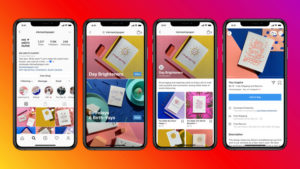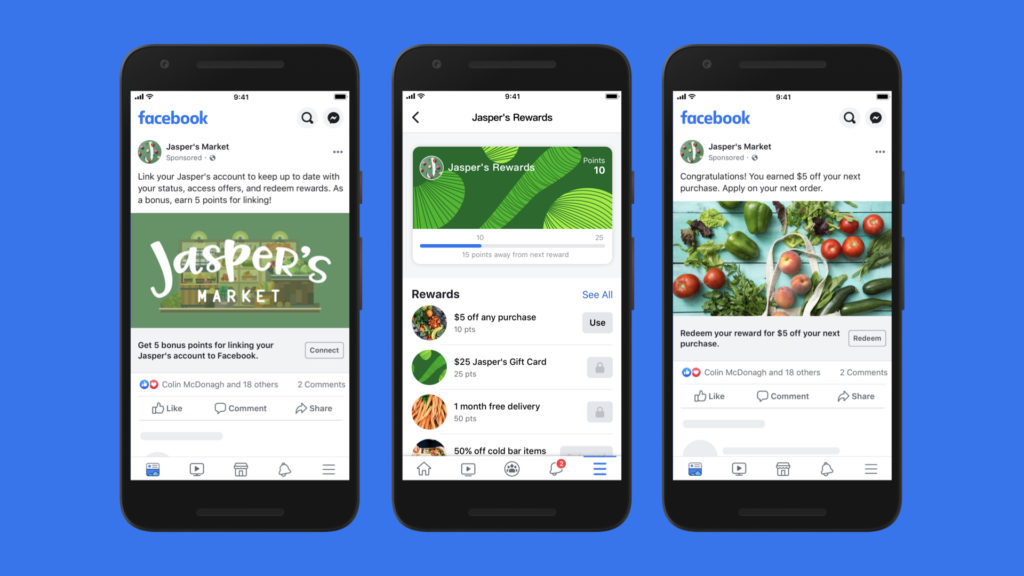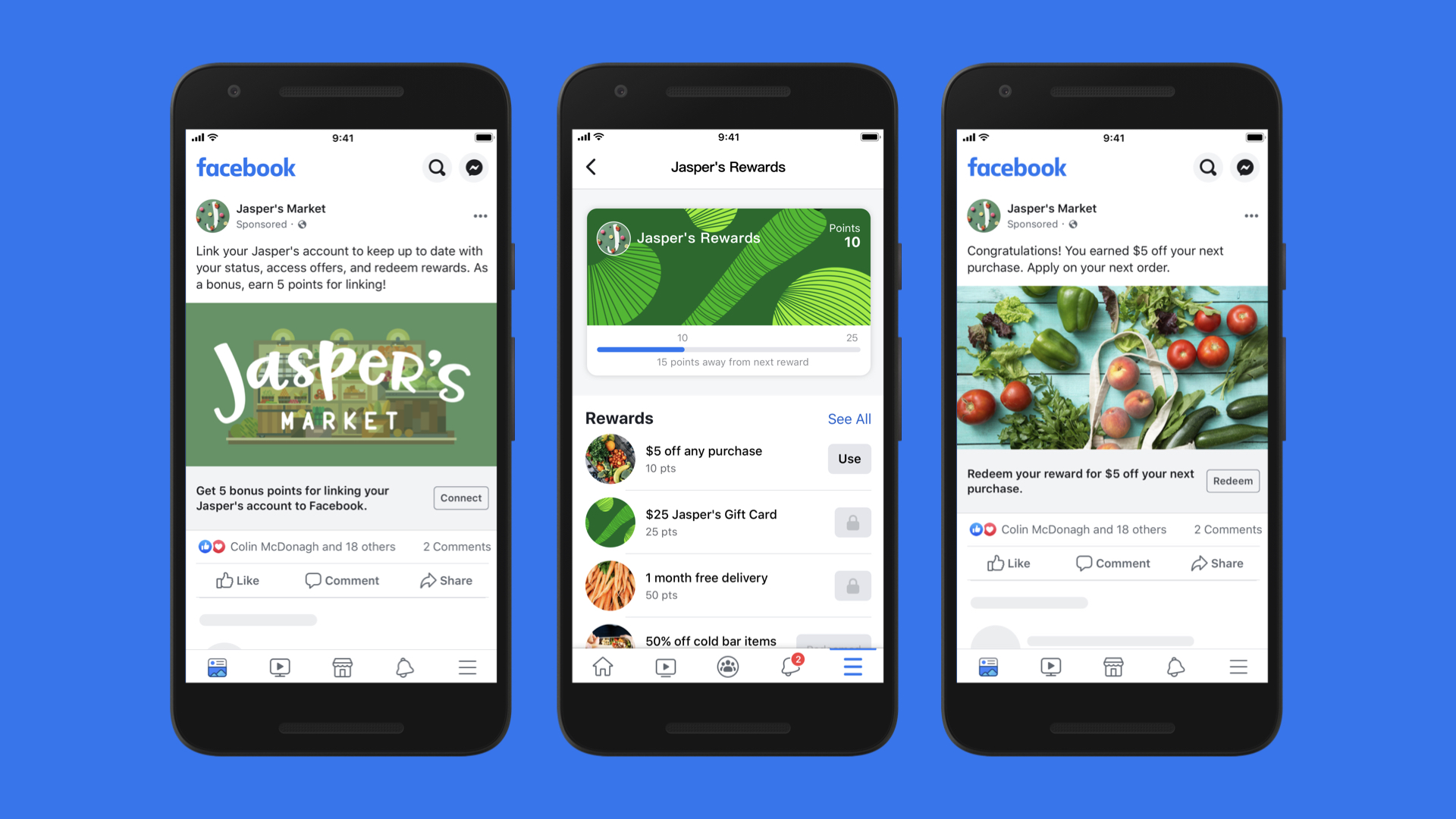The COVID-19 pandemic has completely changed our way of life, with Main Street’s brick-and-mortar retailers seeing their businesses get upended. Between state and local shelter-at-home mandates and consumers’ general unease in venturing out, small retailers that did not have an online storefront have struggled immensely. In response to the pandemic’s devastating effects on retailers, Facebook accelerated their introduction of Facebook Shops, a new tool for small businesses to easily bring their products online and make them shoppable within the social network.
This post covers the opportunity presented by Facebook Shops, how repurposing UGC can drive social ecommerce sales within Facebook and beyond, and the importance of securing UGC rights.
Facebook Shops Makes Online Stores Available to Anyone
Ecommerce is not a completely new feature on Facebook. Online retailers have had the ability to connect their digital product catalogs to the social network for a while. You may have noticed some images, videos and stories in your social feed tagged with a product icon—clicking the image opens a shoppable “hotspot” where you can view more information. Over on Instagram, the advent of Instagram Checkout a year ago meant consumers could complete their purchase without ever having to leave the social platform.

These features have created big results for retailers. Since implementing the product tag feature, fashion brand Barbour has reported a sales increase of 42% from Instagram coupled with a website traffic lift of 98%.
Where Facebook Shops changes the game is that retailers will be able to create a shopping experience within Facebook and Instagram without needing to have an online store elsewhere. In other words, for retailers without an online storefront, Facebook itself can be their ecommerce platform. This is attractive to those for those who have avoided creating their own ecommerce site or even using an online platform such as Shopify, due to either the high startup costs or their lack of technical acumen.
While initially available to a few retailers, Facebook Shops will be broadly available in a few months. At that time, retailers will be able to easily upload their products and curate collections on Facebook in the same way that they upload photos and create albums. And these images will be instantly shoppable within the world’s largest social network.
Retailers with the most to gain from Facebook Shops are those selling products with real visual appeal—makeup, clothing, and anything related to style are all primed for this experience. Collectibles, cookware, and gadget sellers will also benefit from in-app impulse buys.
User-Generated Content Takes Center Stage
The inherent value of Facebook Shops is that ecommerce can happen on the same platform where consumers and retailers are already having social interactions. Loyal fans often show their brand love with user-generated content (UGC)—posting photos with their favorite products on Facebook and Instagram. While retailers have been able to interact with this kind of UGC in the past by liking, commenting on and resharing it to their brand’s channel, even small businesses now have the ability to make those fan photos shoppable within Facebook Shops.
There are a few ways sellers can put UGC into their ecommerce mix. First, they can use it as supporting imagery in their Facebook Shops page. As reported by Impact, Millennials spend 5.4 hours a day with content created by their peers. Clearly, consumers like to see how products look in the real world, and UGC is one strong form of social proof.
Second, retailers can repost an image and apply a product tag from their Facebook Shops catalog, making the image instantly shoppable. Showing how someone actually uses a product can help convert window shoppers into buyers—Social Media Week has reported that 90% of consumers believe UGC influences their purchasing decisions.
TINT Expands Your Social Ecommerce Possibilities
Making UGC shoppable on Facebook and Instagram is just the beginning of how retailers should be using powerful word-of-mouth marketing. Brands should look beyond the walled garden of Facebook to implement an omnichannel social commerce strategy, starting with their website. This is where TINT for social ecommerce really shines.
With TINT, you can quickly create beautiful product galleries that feature authentic photos from any social channel by consumers of your products. These galleries can be implemented on your website with just a few lines of code, providing social proof for visitors browsing your site. And just as with Facebook Shops, you have the ability to tag UGC with product hotspots that let the prospect make a seamless transition from looking to buying by clicking the image and adding the product to their cart.
In-App Loyalty Programs
The days of “paper” loyalty programs may be over, with Facebook Shops bringing rewards tracking to the digital realm. Instead of fumbling for that card on your keychain or in your wallet, you’ll soon be keeping track of your points and progress within the app.

Facebook is tight-lipped on the details at the moment, saying that they are testing ways to connect loyalty programs to their app. The feature will likely track both real-world interactions, such as when you check in at a cafe and make a purchase with a connected credit card, and digital transactions through Facebook Shops.
UGC and brand loyalty go hand-in-hand—your most devout fans are often the ones creating social media content about your products. Brands can take cues from the hospitality industry to get passionate customers to post about them, which fosters not only brand loyalty but also awareness.
Facebook Shops is an exciting announcement in the world of ecommerce, and TINT is here to help your brand navigate social ecommerce via UGC curation, repurposing, securing UGC rights and the creation of shoppable galleries. Schedule a demo today to learn more.




